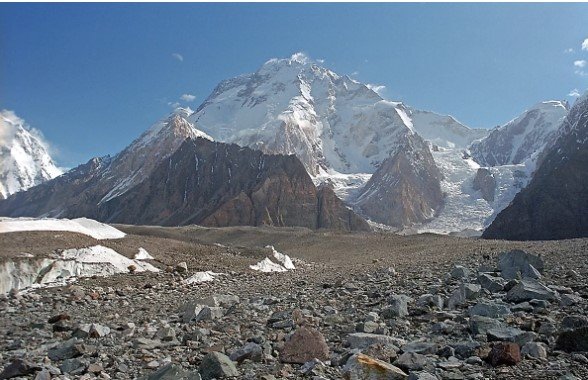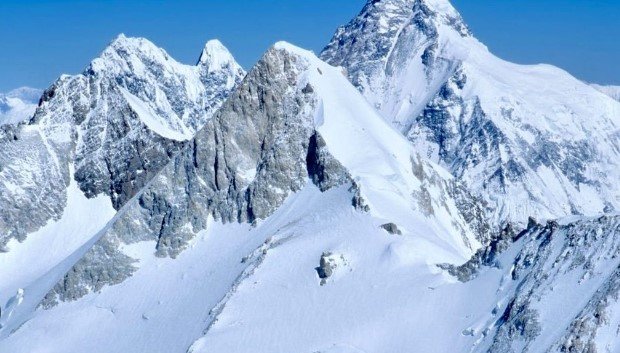Top 5 Mountains in Pakistan Attract More Tourists
Mountains are significant landforms that rise above the surroundings and are created by
volcanism or tectonic processes. Around 14 highest mountains in the world have heights of more than
8,000 meters. There are 108 peaks higher than 7,000 meters in Pakistan. Probably just as many summits rise over 6,000 meters.
The summits over 5,000 and 4,000 meters have not been counted.
Due to their limited topographic prominence, many peaks are typically not classified as distinct mountains but rather as sub-peaks of larger mountains.

The Karakoram mountain range has the majority of Pakistan’s tallest peaks, however, the Himalayan and Hindu
Kush mountain ranges also have several mountains that are higher than 7,000 meters. In Pakistan, there are a lot of unidentified peaks that are yet to be found.
Not only are Pakistan’s mountains are highest in the world, but they are also unquestionably the most stunning. There
is a variety from snowcapped record-breakers to lush, undulating mountains. Are you ready to visit Pakistan’s most stunning
mountains for yourself or with your family?
Let’s get started: listed below are the top 5 mountains in Pakistan that attract tourists from around the world along with
some other essential details.
Top 5 Mountains in Pakistan
1. K-2
K2 is known by the name Godwin Austin or Chhogri. It is the world’s second-highest mountain.
It shares borders with Pakistan and China. It measures 8611 meters in total. The Savage Mountain is the
name given to K2 by Charles Houston and Robert Bates. Two men made it to the summit of K2 in 1954 as part of a major Italian expedition that used the mountain’s
Pakistani side and the now well-known summit route.
K2 is located inside the Central Karakoram National Park, which is a protected area. The journey to this
famous base camp is one of the finest adventures in the world, and getting there is worth the cost and effort.
The journey will start in the tiny village of Askole, from which point you will walk and camp on the Baltoro Glacier for a few days until you arrive at the surreal Concordia campground.

In addition to defining the typical picture of a mountain, K2’s sharp triangular shape and height above the
surrounding area make it far more challenging and dangerous to climb. Every one out of four climbers is killed.
Until 300 successful missions to K2 are completed now with 77 fatalities.
It takes around 7 days to get there, after which you may either walk back the same route or choose to go one
better by crossing the fascinating Gondogoro La, which rises to a height of more than 5600 m.
You should be well-prepared to deal with the frigid temperatures because the K2 trip can be quite chilly even in
July. Overall, K2 Basecamp is one of the most captivating journeys in the world and the most stunning natural location in Pakistan.
Pakistan on World Tourism Index

2. Broad Peak
Broad Peak is one of the highest mountains in Pakistan and the 12th highest mountain in the world at 8,051
meters (26,414 ft) above sea level. Fans of hiking and trekking come to Pakistan to explore this stunning peak.
As a result of its very broad peak, which is 1.5 km long, the mountain is known as a broad peak. The Balti
people do not agree with Falchan Kangri’s exact translation of “Broad Peak.” Martin Conway, a British adventurer, coined its English name in 1892.
It has three summits, the main summit of Broad Peak rises to a height of 8,047 meters, the center summit
rises to a height of 8,016 meters, and the north summit rises to a height of 7,550 meters. In Baltistan, close to
Pakistan and China’s borders, Broad Peak is a part of the Gasherbrum massif. About 8 kilometers (5.0 mi)
from K2, Broad Peak is situated in the Karakoram mountain range.

On June 9, 1957, members of an Austrian expedition led by Marcus Schmuck—Fritz Wintersteller,
Marcus Schmuck, Kurt Diemberger, and Hermann Buhl—made the first climb of Broad Peak. On May 29,
Fritz Wintersteller and Kurt Diemberger made the team’s first attempt, reaching the forepeak (8,030 m).
Additionally, this was completed without the use of base camp assistance, high-altitude porters, or additional oxygen.
Many teams now use Broad Peak’s easy route to climb for a quick ascent of K2 in an alpine way. It is a somewhat
difficult climb to the summit via the west ridge, but like with other summits in the Karakoram range, the weather
is generally the deciding factor.
Only five people—and no one else—have climbed more than twice. Broad Peak climbed 255 times, with
18 fatalities, between the first ascent in 1957 and August 2003. Therefore, the rate of death is around 7%, which may
be contrasted with, for instance, Everest’s 9% death rate. Although it is one of the relatively risky 8000-meter summits,
avalanche danger should never be underestimated.

3. Nanga Parbat:
The other significant peak in Pakistan is Nanga Parbat, which rises 8,126 meters (26,660 feet) above sea
level and ranks as the ninth-highest mountain in the world. The name Nanga Parbat, which translates to “naked mountain,”
is taken from the native tongue.
Nanga Parbat is another cruel mountain in Pakistan since it is renowned for being challenging to climb. It is an enormous,
majestic peak standing well above its surrounding area. Its nickname, “killing mountain,” came from the numerous
climbing fatalities that occurred there in the middle and early 20th century.
It is located in Pakistan’s Gilgit-Baltistan province. Nanga Parbat is a solitary pyramid near the westernmost tip of the
Himalayas, separated from the rest of the Karakoram by the Indus River.
The mountain ruthlessly murdered Englishman A. F. Mummery and his two high-altitude porters in 1895,
the first time an 8,000-meter summit had ever been attempted. Before Austrian Hermann Buhl reached the
peak in 1953, 28 more people were killed in four disastrous attempts. One of the most highly prized goals for
Polish winter mountaineers are Nanga Parbat. It has been attempted before by four Polish teams, all of which failed.
Polish mountaineers likely would have risked their lives and limbs to compete for the title of first to climb Nanga Parbat.

4. Snow Lake
One of Pakistan’s most magnificent high-altitude hikes is Snow Lake. The hike to Snow Lake is probably
one of Pakistan’s most breathtaking excursions. While NOT recommended for novices, trekkers with any
expertise will go on the most breathtaking trip of their lives amidst some of Pakistan’s most renowned mountains.
The Biafo and Hispar glaciers meet at the point where they form The Lake, a high-altitude glacial basin.
This region contains the highest density of glacial ice outside of Antarctica, with a breadth of more than 16
kilometers. Beginning on the K2 Basecamp Trek path and ending in Hispar on the Hunza side lies Snow Lake.
Acclimatization is essential, and while guides are only necessary for foreigners, regardless of where you are
from, you would need to be quite skilled to do this on your own!
There are very few trekking groups that complete the crossing each year, making it considerably more inaccessible
than the K2 Basecamp Trek. That is one of the few places in Pakistan where you can see Markhor, Ibex, Himalayan
Bears, or even Snow Leapords since it is so distant.
Trekking might expose you to difficult camping weather conditions like snowstorms or extended periods of exposure
to the sun. This is a challenging climb that offers some of the best trekking vistas in the world due to the rocky, glacial landscape.

5. Gasherbrum I
Gasherbrum I is another stunning peak in Pakistan and ranks as the 11th tallest mountain in the world at
8,080 meters (26,510 feet) above sea level. It is among the top 14 mountains in the world. It is sometimes referred to as Hidden Peak or K5.
It is situated in the Chinese portion of Xinjiang and the Gilgit-Baltistan area of Pakistan, which are both next to
the Pakistani border. In the Karakoram area of the Himalayas, Gasherbrum I is a part of the Gasherbrum massif.
In allusion to the prominent face of the nearby peak Gasherbrum IV, Gasherbrum was once thought to mean “
Shining Wall,” but the name derives from the Balti words “rgasha” (beautiful) and “Brum” (mountain), meaning
“beautiful mountain.” It is beautiful to look at.
On July 5, 1958, Pete Schoening and Andy Kauffman of an eight-person American expedition headed by Nicholas B
. The first ascent of Gasherbrum I was made by Clinch. Other team members included Tom McCormack, Richard K.
Irvin, Bob Swift, Tom Nevison, and Gil Roberts.
In 1975, Reinholf Messner and Peter Habeler accomplished the first climb of an eight-thousander through a
brand-new route. Gasherbrum I is a technically difficult peak that only skilled and competent mountaineers will
attempt to climb. As a result, Gasherbrum I only had 200 successful ascents altogether.

Read More:


2 Comments